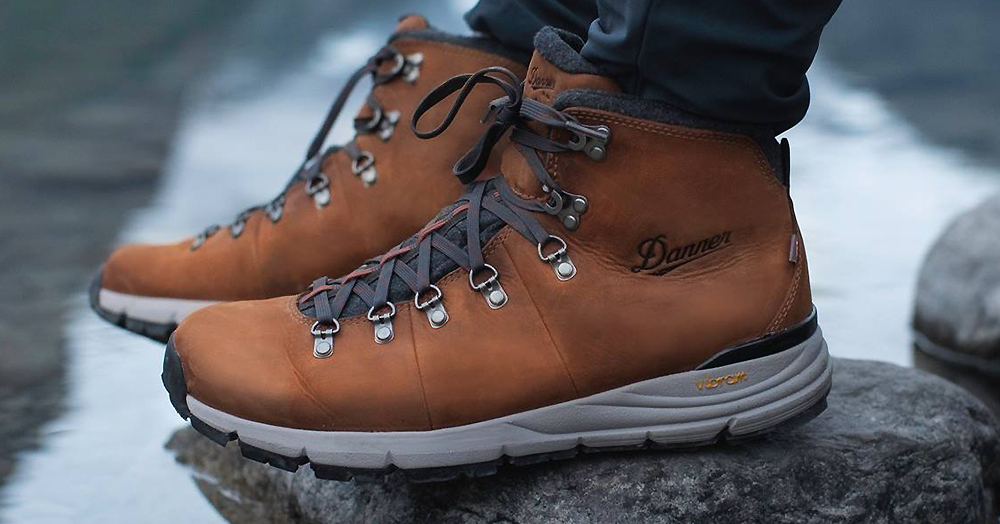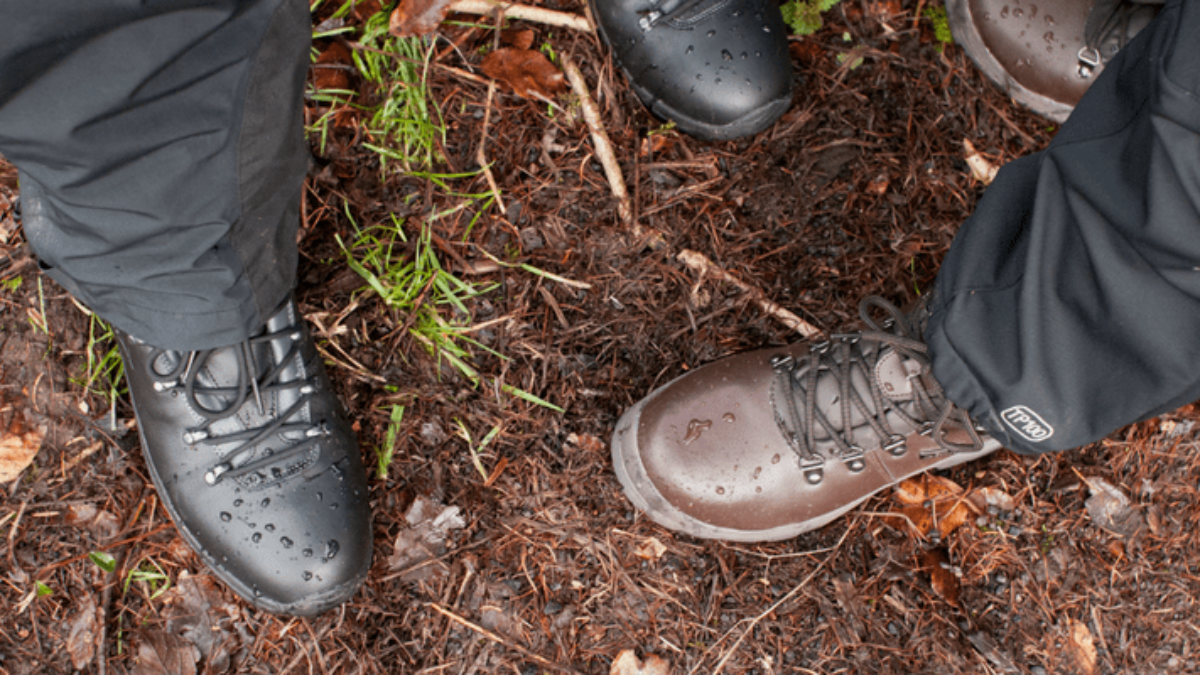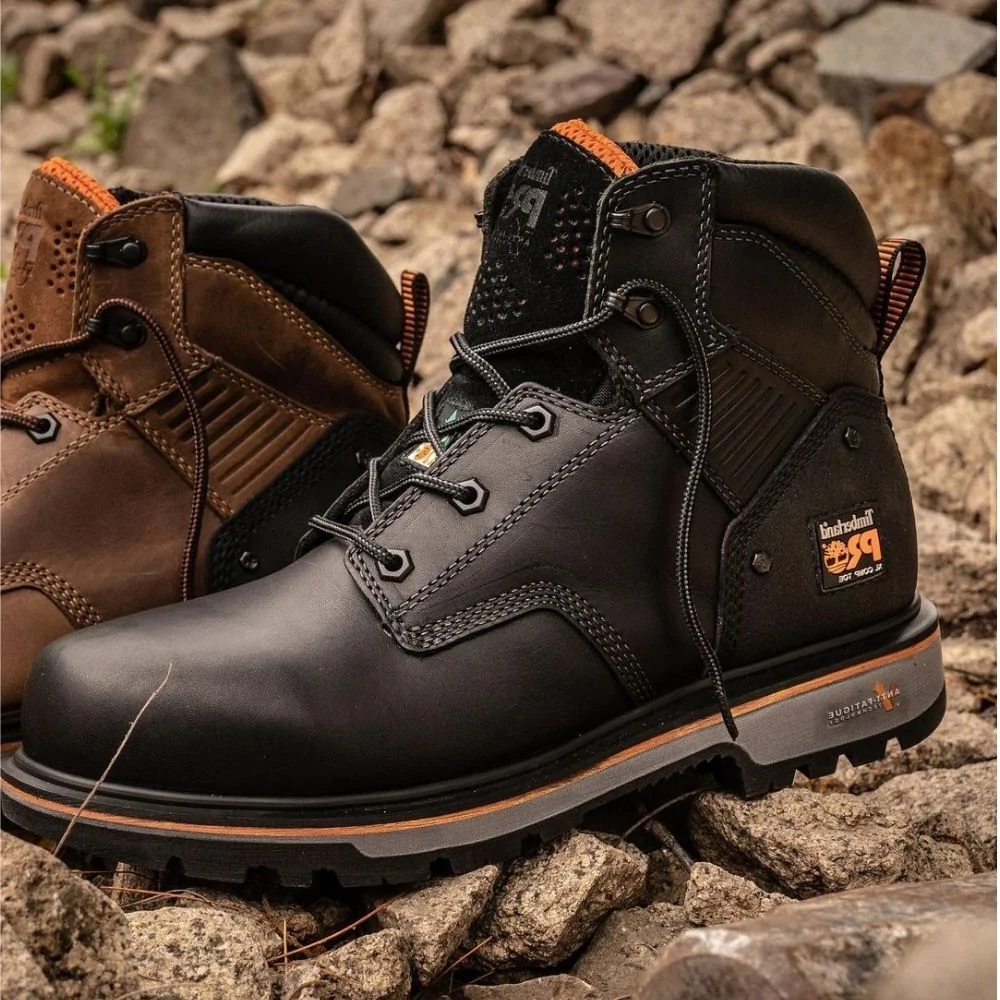Are you an outdoor worker looking for protection and comfort in your work boots? Then water-resistant footwear is what you need!
You can now enjoy dry feet, slip-resistance and longer durability with waterproof work boots. Read ahead to discover all the amazing benefits this type of footwear has to offer.
Work boots are an essential part of any job requiring manual labor or rigorous physical activity. Waterproof work boots help protect the feet from getting wet and damaged during wet or rainy days. The additional protection also provides peace of mind to those working in environments with hazardous liquids or slippery surfaces. Investing in a good pair of waterproof work boots can make a world of difference for anyone who works in these dangerous environments.
In this guide, we’ll explore the features of waterproof work boots and discuss why they are an invaluable asset for outdoor workers. We’ll explain how these boots provide extra protection from the elements, and we’ll highlight the benefits for employers and workers alike. By the end, readers will have a strong understanding of why investing in waterproof work boots is important and how doing so can help improve safety on the job site.

Explanation of waterproof work boots
Waterproof work boots offer a unique combination of comfort, protection, and practicality for workers immersed in wet or damp conditions. These specialized boots are constructed out of waterproof materials that keep the feet dry even when submerged in rain, snow, or other forms of liquid. Additionally, these waterproof work boots feature specialized construction features that provide additional support and protection for the foot and lower leg. In this guide, we will provide a detailed explanation of the features associated with waterproof work boots and outline their many benefits.
Waterproof work boots are designed with several key elements that make them specifically suited for working in wet or damp environments. These elements include:
- 100% waterproof construction; this ensures that no moisture is able to get through the exterior materials of the boot.
- Additional cushioning in the heel and arch areas; this helps to protect feet from shock associated with repetitive impacts while walking through wet terrain.
- Additional padding around the ankle area; this helps provide extra cushioning along with stability on uneven terrain.
- Deep tread patterns on sole; these deep patterns allow for better gripping when maneuvering through wet or slippery surfaces.
- A narrow fit for improved traction; a narrow fit helps prevent slipping because it prevents water pooling around the foot area which then increases traction on certain surfaces like mud or grassy patches.
Purpose of the guide
This guide is designed to provide an overview of the benefits of waterproof work boots and what makes them a beneficial investment for professionals in a number of industries. Practical considerations, such as styles and materials, as well as helpful tips on choosing the best pair will be included. With the right waterproof work boots you can stay comfortable and safe in even the most hazardous environments.
By providing information on what these boots are and different aspects to consider when investing in them, this guide will help you make an informed decision about whether or not to invest in a pair. With knowledge of these types of boots, you can become better equipped for physical tasks both outdoors and indoors without compromising your safety or comfort.
This complete guide includes an explanation on why waterproof work boots should be part of every working man’s wardrobe. We will also delve into how these boots are constructed specifically for practicality, performance and durability with key details about each component from outsole to soleguard.
Brief overview of the benefits of waterproof work boots
Waterproof work boots are designed to protect your feet from the elements, while also providing important features such as traction, support and stability. They can be worn in both wet and dry conditions and some models even come with water-resistant coating added to their upper material.
Unlike regular shoes, waterproof boots are constructed with a waterproof membrane that is sealed between the upper material and the sole of the boot. This helps protect your feet from any water that may seep through normal shoes or boots.
Additionally, waterproof work boots are typically made with durable materials such as leather or vinyl which can last for years even in rugged environments. This makes them an ideal choice for those who work in construction, landscaping or other manual labor jobs as they help protect your feet and keep them dry while also providing support during hard labor tasks.
Choosing the Right Waterproof Work Boots

When it comes to choosing the right waterproof work boots, there are several factors to consider. It is essential to buy boots that offer a good fit, as well as proper protection from the elements. When you shop for waterproof work boots, make sure to take into account type and material of the boot construction, type of sole design and tread for maximum traction, and any special features.
Type of Boot Construction:For optimal waterproof performance, choose a full-grain leather construction with rubber oversoles and a sealed seam on the back side of the boot. This type of construction offers better abrasion resistance against water infiltration and better breathability for foot comfort.
Design & Tread: Tread patterns with deep lugs provide better traction on various terrain types—just make sure it also has enough drainage channels to allow water flushed away quickly as you walk through wet conditions. Also ensure that there’s sufficient arch support built-in and an adequate heel-claw counter designed into the upper part of your boot—this gives you greater stability while walking on sloping terrain or in slippery conditions.
Special Features: Look for additional features like a gusseted tongue that will help keep water out while still providing your feet with ample ventilation; likewise look for an internal waterproof membrane that will be seal off intricate parts around your toes such as eyelets or lacing loops. For maximum warmth choose boots with insulation, such as Thinsulate® or ultra-warm liners, which can give you extra protection from cold winds on cold weather days without adding weight or taking away from breathability.
Material
When searching for the right waterproof work boots, it’s important to consider the material that they are made of. This can have a big effect on the durability and protection that you receive, and your boot’s performance in different conditions. The most popular materials used in work boots include leather, rubber, and synthetic materials such as nylon.
Leather is a durable material known for its breathability, comfort and protection. It will hold up to wear better than many other materials but is more expensive than synthetic alternatives. Leather also needs regular conditioning to remain waterproof.
Rubber is a popular choice since it can be molded into virtually any shape or design desired. It offers outstanding protection from liquids, snow, ice and chemicals while being lightweight. The downside of some rubber boots is they may lack breathability which makes them hot and uncomfortable to wear in summer weather conditions. They are also not as flexible as leather or other fabrics so you may experience discomfort when standing for extended periods of time or hiking over rocky terrain due to lack of cushioning support given by soft fabrics like leather or similar materials used in many boots today.
Synthetic fabrics provide lightweight flexibility while still providing excellent protection from liquids like water or sweat which make stainless steel “waterproof” workboots ideal when working outdoors in wet climates such as dam construction sites, oil rigs, construction sites etc. Synthetic fabrics are usually less expensive than leather but also much less durable so you should expect them to need replacing more often then not.
Comfort
In addition to being extremely waterproof, work boots should also offer high levels of comfort. All day, your feet are being subjected to the impact of walking and standing on all types of surfaces. Work boots should have a design that is not only very supportive but also helps keep your feet comfortable as you go through your various tasks.
Choosing waterproof work boots that are made with materials such as leather, aluminum, synthetic fabrics and polyurethane can provide needed comfort while at the same time providing strong support. Look for boots that are lightweight and offer cushioning while protecting against harsh weather conditions.
Additionally, breathable liners can help prevent overheating and discomfort caused by moisture build-up inside the boot and can help keep your feet dry all day long.

How to Maintain Your Waterproof Work Boots
To keep your waterproof work boots in good shape, it is important to clean and maintain them regularly. Here are some tips to help you do this:
- Clean your boots after each day of use: The best way to keep your waterproof work boots looking their best is to give them a quick cleaning after each day of use. Use a soft brush with mild soap and gently scrub the surface of the boots, paying special attention to any stains or dirt that may have accumulated. Rinse well with cool water and dry with a soft cloth.
- Apply waterproofing products: Look for a product specifically made for waterproof work boots that can be applied regularly to help keep them in top condition. Make sure to test any product before using it on your boots, as some materials may not perform well under certain conditions or on certain types of leathers or fabric finishes used in the construction of the boot.
- Condition leather material: Regular conditioning will help keep leather looking its best and extend its life span significantly. Look for an alcohol-free conditioner designed especially for leather materials when choosing a product for maintaining your waterproof work boots – apply evenly and allow it plenty of time to absorb before wearing again so that you don’t damage the material by putting wet feet inside!
- Replace laces regularly: Check lacing frequently, as they will wear out over time just like any other item made from fabric or threading material when faced with water, mud and dirt on a regular basis – replace worn ones so they last longer!
Cleaning
Cleaning waterproof work boots should be a regular part of your footwear maintenance routine, especially if you work in wet conditions or have been in contact with harsh chemicals. Below are several tips for cleaning and caring for your waterproof boots:
- Brush off any excess dirt or mud that is stuck on the exterior of the boots with a damp cloth. Wipe down the toe cap, sides, and heel area to get rid of any dust or debris.
- Use specialized leather cleaners to remove stubborn dirt spots on leather waterproof work boots. These cleaners are specifically formulated to help treat stains without damaging the material used to make your waterproof work boots.
- If you purchased a pair of synthetic waterproof boots, you can use mild soap and warm water to clean them when necessary. Simply mix a few drops of mild dish soap into a bucket of warm water and use this solution to wash away grit and grime from the exterior surface of your shoes.
- Once you’ve finished cleaning each pair of water-resistant work shoes, it’s time to condition them with an appropriate product for their material type. Apply shoe conditioner liberally onto the upper surface areas before wiping away any excess residue with a soft cloth. This will help keep your shoes looking their best while ensuring they resist water damage as well as regular wear-and-tear over time.
Drying
Once your waterproof work boots are finally dry and clean, it is important to dry them thoroughly. Two common ways of drying your boots are air-drying or applying gentle heat.
Air-drying is simple and effective as long as you have the time and patience. Simply stuff your boots with newspaper to retain their shape while they dry, then set them in a warm, well-ventilated area with direct sunlight. This will draw out the remaining moisture and thoroughly dry them to prevent the buildup of bacteria or unpleasant odors.
If you’re in a hurry, you can use gentle heat to speed up the drying process. Much like air-drying, start by stuffing your boots with newspaper to retain their shape. Set them either near a heater or outside in direct sunlight (avoiding temperatures above 85°F) for a few hours until all moisture has evaporated from the surface. However, be sure not to place them too close to the heat source, as damage can be caused if exposed for too long at high temperatures.
Applying Waterproofing Agents
Adding a waterproofing agent to your work boots is one of the best ways to ensure that they remain water and stain resistant. Before you apply any kind of waterproof coating, it is important to clean and remove any dirt or debris from the surface of your boots. Then, using a soft cloth or brush, apply the waterproof treatment according to package directions. Most waterproofing agents need to be allowed to dry for at least 24 hours, so make sure you provide adequate ventilation when applying them. After that, the treated area should provide protection from water and other liquids for three months or longer.
You can also use wax paste boot dressings instead of liquid treatments if desired. These are applied with a regular shoe brush and then wiped off with a dry cloth after five minutes of drying time. The wax coatings can provide an extra layer of protection on top of any existing treatment as well as upping your boot’s appearance and durability in wet conditions.
Conclusion
The right waterproof work boots can make a massive difference in how safely and comfortably you work, whether in wet or dry conditions. Waterproof boots help keep your feet dry and warm, even when you’re working in a wet environment. Good waterproof boots are also designed to be comfortable and supportive throughout their lifetime of wear. And, if you need more support or protection for your feet, look for a pair of safety toe work boots that are made of waterproof materials as well.
Ultimately, choosing the right waterproof work boots goes beyond aesthetics. Making sure they fit properly and have the features you need is essential to having the safest, most comfortable experience on the job site or during outdoor work activities. Investing in good-quality waterproof footwear is an important part of protecting your feet from potential hazards such as slipping or tripping on slick surfaces; plus, it can go a long way towards keeping your feet warm and dry during dreary days out on the job site.

FAQ’s
What is the benefit of waterproof boots?
The benefit of waterproof boots is that they keep your feet dry and prevent water from penetrating through the material.
What are the benefits of safety boots?
The benefits of safety boots include protection against impacts, electrical hazards, and other workplace hazards that could cause injury to the feet.
How do waterproof boots work?
Waterproof boots work by using materials that are impermeable to water, such as Gore-Tex or other waterproof membranes, to prevent water from entering the interior of the boot.
What’s the purpose of waterproof?
The purpose of waterproofing is to prevent water from penetrating into a material or object, which can help to protect it from damage or deterioration.
Do waterproof boots keep feet warm?
Waterproof boots can help to keep feet warm by preventing water from entering the boot and causing the feet to become cold and wet.
Do feet sweat more in waterproof boots?
Feet may sweat more in waterproof boots because the waterproof membrane can reduce the breathability of the material, which can trap heat and moisture inside the boot.
How long does waterproofing last on boots?
The duration of waterproofing on boots depends on the quality of the waterproofing treatment and how often the boots are used. It can last from a few months to several years.
What should I look for in waterproof boots?
When looking for waterproof boots, it is important to consider the quality of the waterproofing material, the fit and comfort of the boots, and any additional features that may be important for your intended use.
Do waterproof boots keep your feet dry?
Yes, waterproof boots are designed to keep your feet dry by preventing water from entering the interior of the boot.
When should I waterproof my boots?
It is a good idea to waterproof your boots before you use them in wet or damp conditions, and to reapply the waterproofing treatment
See Also:
- Best orthopedic work boots 2023
- Best work boots for sore feet 2023
- Best pull on work boots 2023
- Best red wing work boots 2023
- Best work boots for standing on concrete 2023

